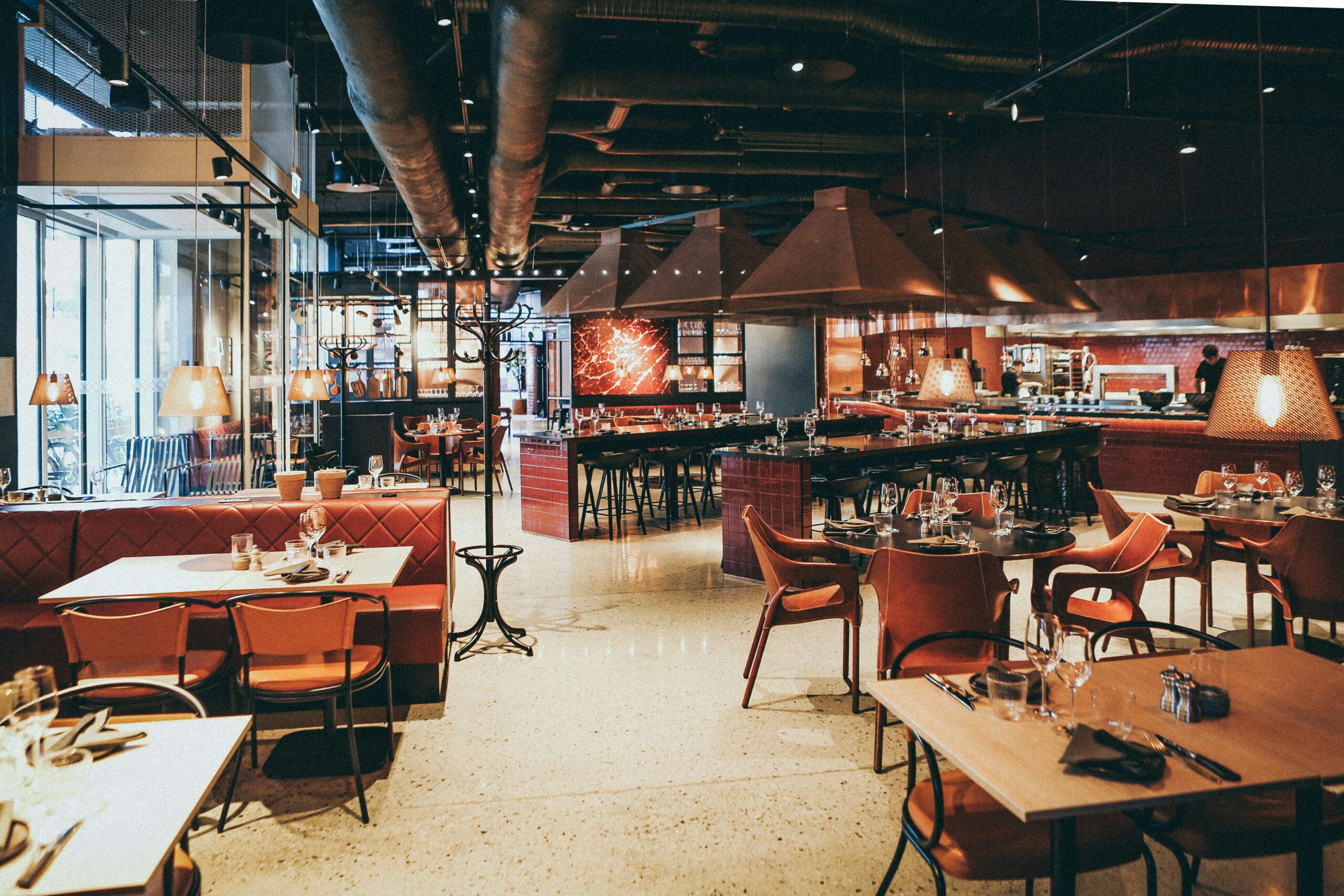Run A Profitable Restaurant
Are you struggling to turn a profit in your restaurant? You’re not alone. The restaurant business is notoriously challenging, with many establishments closing within the first few years. However, with the right strategies, you can turn your restaurant into a profitable restaurant venture by implementing some of the restaurant revenue strategies outlined in this article. Let’s explore the potential for success and how to run a profitable restaurant business.

Understanding the Restaurant Business Landscape
Overview of the Restaurant Industry
The restaurant industry, a vibrant and dynamic sector, holds significant global economic influence. In 2024, it was forecasted to reach $1 trillion by the National Restaurant Association in the US. The restaurant industry’s market size in the United Kingdom was expected to grow to 18.7 billion British pounds in 2023, marking a 2.6 per cent increase from the previous year. Projections indicated that the market size would continue to expand, reaching 19.5 billion British pounds by 2026, a testament to its immense economic impact. However, despite this, restaurant revenue and profitability can be challenging due to high operating costs and slim margins.
Importance of Profitability
Profitability is not just a goal, it’s the lifeblood of any restaurant. Without it, even the most popular restaurants can fail. Understanding where your money is going and how you can optimise every aspect of your business to boost profits is not just crucial, it’s imperative.
Key Challenges Faced by Restaurants
Restaurants face numerous challenges, including high rent, labour costs, and food prices. Additionally, changing consumer preferences and economic downturns can impact profitability. Understanding and acknowledging these challenges is the first crucial step in overcoming them, and we’ll explore strategies to do so.
Market Analysis and Positioning
Identifying Your Target Market
Knowing your target market is essential. Are you catering to millennials who prefer casual dining and quick service, or are you aiming for an older demographic that enjoys fine dining? Your target market will influence your menu, pricing, and marketing strategies.
Analysing Demographics and Preferences
It is essential to investigate your target audience’s demographics and preferences thoroughly. Offering healthy, quick meals could be a profitable strategy if you’re in an area with a high population of young professionals.
Market Segmentation
Segmenting your market is an essential strategy that enables you to customise the products or services to cater to the unique requirements of various customer segments. This might involve creating distinct lunch and dinner menus or providing targeted promotions to appeal to particular demographics.
Positioning Your Restaurant for Success
Your restaurant’s positioning is how you differentiate yourself from competitors. Are you a budget-friendly family diner, a chic urban cafe, or a high-end gourmet restaurant? Precise positioning helps attract the right customers and increases profitability.
Competitive Analysis
Identifying Direct and Indirect Competitors
Identifying both direct and indirect competitors helps you understand the competitive landscape. Direct competitors are those offering similar cuisine and dining experiences, while indirect competitors might be other forms of dining options like food trucks or delivery services.
Analysing Competitor Strategies
Analyse what your competitors are doing well and where they’re falling short. This insight can help you refine your own strategies. For instance, if a competitor is excelling with a robust online presence, investing in digital marketing might benefit you.
Finding Your Unique Selling Proposition (USP)
Your USP is what sets you apart from the competition. It could be a signature dish, exceptional customer service, or a unique dining atmosphere. Highlighting your USP in your marketing and operations can attract more customers and drive profits.

Financial Management
Budgeting and Financial Planning
Creating a detailed business budget is fundamental. Forecast your revenue and expenses accurately. According to the National Restaurant Association, an average restaurant’s profit margin ranges from 2% to 6%, making meticulous financial planning critical.
Creating a Business Budget
A comprehensive budget includes all fixed and variable costs. Fixed costs include rent and salaries, while variable costs include ingredients and utilities. To stay on track, regularly review and adjust your budget.
Forecasting Revenue and Expenses
Accurate forecasting is a key tool in setting realistic financial goals. By using historical data and market trends to predict future sales and expenses, you can make informed decisions and prepare for financial fluctuations.
Financial Goals and KPIs
Set clear financial goals and key performance indicators (KPIs). These could include targets for monthly revenue, food cost percentages, and labour cost percentages. Regularly monitor these KPIs to ensure your restaurant is on track to profitability.
Cost Control Strategies
Managing Fixed and Variable Costs
Effective cost management involves monitoring both fixed and variable costs. Negotiating better deals with suppliers and optimising labour schedules can lead to significant savings.
Reducing Food and Beverage Costs
Food and beverage costs can consume a large portion of your budget. Implementing portion control, reducing waste, and choosing cost-effective ingredients can lower these expenses.
Controlling Labor Costs
Labour is one of the highest expenses for any restaurant. Use scheduling software to optimise staff hours and reduce overtime. Cross-training employees can also provide more flexibility and efficiency.
Revenue Enhancement Techniques
Pricing Strategies
Develop a pricing strategy that covers costs and maximises profits. Depending on your target market and positioning, this might include competitive, value, or premium pricing.
Upselling and Cross-Selling
Train your staff to upsell and cross-sell effectively. Encouraging customers to try higher-margin items or add-ons like desserts and drinks can significantly boost your average check size.
Menu Engineering
Menu engineering involves analysing the profitability and popularity of each menu item. Adjust your menu to highlight high-margin items and remove or reprice less profitable ones.
How to Improve Restaurant Profits and Increase Restaurant Sales
Operations and Efficiency
Optimising Restaurant Operations
Streamlining operations can improve efficiency and reduce costs. Evaluate every aspect of your restaurant’s operations, from kitchen workflow to front-of-house processes.
Streamlining Processes
Implement standard operating procedures (SOPs) to ensure consistency and efficiency. SOPs can help reduce errors, save time, and improve overall quality.
Technology Integration
Leverage technology to enhance operations. Point of Sale (POS) systems, inventory management software, and reservation systems can improve efficiency and provide valuable data for decision-making.
Inventory Management
Effective inventory management reduces waste and ensures you have the right amount of stock. Use inventory management systems to track usage patterns and reorder supplies efficiently.
Quality Control and Consistency
Maintaining Food Quality
Consistent food quality is crucial for customer satisfaction and repeat business. Implement strict quality control measures and regularly train staff on preparation standards will generate a profitable restaurant business in a short space of time.
Standard Operating Procedures (SOPs)
SOPs ensure that every staff member can perform tasks correctly, leading to consistent service and food quality.
Customer Experience Consistency
Consistency in customer experience builds trust and loyalty. Ensure that customers receive the same high level of service every visit, whether their first or fiftieth.
Marketing and Customer Engagement
Building a Strong Brand
A strong brand identity helps differentiate your restaurant and attract loyal customers. Develop a compelling brand story and ensure consistent visual and verbal branding across all channels.
Brand Identity and Story
Your brand story should resonate with your target audience and reflect your restaurant’s values. This narrative can be a powerful tool in marketing and customer engagement.
Visual and Verbal Branding
Maintaining a consistent visual and verbal brand across all platforms, including your website and social media, is crucial for creating a solid and cohesive brand identity. This reinforces your restaurant’s identity and makes it more memorable to customers.

Brand Loyalty Programs
Implementing a loyalty program encourages repeat business. Offer meaningful rewards to your customers, such as discounts, free items, or exclusive events.
Effective Marketing Strategies
Digital Marketing and Social Media
In today’s digital age, a robust online presence is essential. Use social media, email marketing, and online ads to reach and engage your audience. According to Statista, 79% of consumers trust online reviews as much as personal recommendations, making digital marketing crucial.
Local Marketing Tactics
Don’t overlook local marketing strategies. Partner with local businesses, participate in community events and use local SEO to attract nearby customers.
Public Relations and Media
Build relationships with local media and influencers to generate positive publicity. Press releases, media kits, and special events can help get your restaurant featured in news stories and reviews.
Customer Relationship Management
Creating a Customer Database
A customer database allows you to personalise marketing efforts and build stronger relationships. Collect information through reservation systems, loyalty programs, and online interactions.
Personalised Marketing
Use customer data to tailor your marketing messages. Personalised emails, special offers, and birthday promotions can increase customer loyalty and drive repeat business.
Customer Feedback and Reviews
Encourage and respond to customer feedback. Positive reviews can boost your reputation, while constructive criticism provides valuable insights for improvement.
Menu Development and Innovation
Crafting a Profitable Menu
A well-designed menu balances popularity and profitability. Highlight high-margin items and use strategic placement to guide customer choices.
Menu Design and Layout
The design and layout of your menu can influence customer decisions. Use eye-catching fonts, colours, and descriptions to make your menu appealing and easy to navigate.
Popular and Profitable Dishes
Identify and promote your most popular and profitable dishes. Regularly analyse sales data to keep your menu optimised.
Seasonal and Specialty Menus
Offering seasonal and speciality menus can create excitement and attract new customers. These limited-time offerings can also test new items before adding them to the regular menu.
Menu Innovation and Trends
Staying current with food trends keeps your menu fresh and appealing. Whether it’s plant-based options, fusion cuisine, or sustainability-focused dishes, innovation can set you apart from competitors.
Adapting to Food Trends
To attract trend-conscious customers, incorporate popular food trends into your menu, adding plant-based options, gluten-free dishes, or locally sourced ingredients.
Incorporating Customer Preferences
Regularly solicit and analyse customer feedback to understand their preferences. Use this information to adapt your menu and keep your offerings relevant.
Testing and Launching New Items
Before adding new items to your menu, test them through specials or limited-time offers. Gather feedback and refine recipes to ensure they’re well-received.
Here’s The Most Profitable Restaurant Model In The UK Right Now
Staff Management and Training
Hiring and Retaining Talent
Attracting and retaining skilled staff is crucial. Competitive wages, benefits, and a positive work environment can help you maintain a dedicated team.
Recruitment Strategies
Use multiple channels to find the best candidates. Job boards, social media, and employee referrals can help you reach a broad talent pool.
Employee Retention Programs
Retaining employees reduces turnover costs and improves service consistency which will lead to a profitable restaurant business. Offer career development opportunities, recognise achievements, and maintain a supportive work environment.
Creating a Positive Work Environment
A positive work environment boosts employee morale and productivity. Foster a culture of respect, teamwork, and open communication.
Employee Training and Development
Comprehensive training programs ensure that staff are well-prepared and confident in their roles. Ongoing training keeps skills sharp and encourages professional growth.
Comprehensive Training Programs
Develop training programs that cover all aspects of the job, from customer service to food safety. Regularly update training materials to reflect best practices.
Upskilling and Continuous Learning
Encourage continuous learning through workshops, courses, and certifications. Upskilling staff can improve performance and job satisfaction.
Performance Management
Implement a performance management system to set expectations, provide feedback, and recognise achievements. Regular evaluations help identify areas for improvement and career growth.
Customer Service Excellence
Delivering Exceptional Customer Service
Exceptional customer service is a key differentiator. Great customer service will increase return visits which will increase sales revenue and create a profitable restaurant business. Train staff to be attentive, friendly, and knowledgeable, ensuring every guest has a memorable experience.
Training Staff on Customer Service
Provide thorough customer service training, emphasising the importance of a positive attitude, effective communication, and problem-solving skills.
Handling Complaints and Feedback
Equip staff with the skills to handle complaints professionally and effectively. A prompt and courteous response can turn a negative experience into a positive one.
Creating Memorable Experiences
Go beyond basic service to create memorable experiences. Personalised touches, surprise treats, and special events can leave a lasting impression on customers.
Loyalty Programs and Repeat Business
Designing Effective Loyalty Programs
Design loyalty programs that reward repeat visits and encourage customer engagement. Points-based systems, tiered rewards, and exclusive perks can boost loyalty.
Encouraging Repeat Visits
Communicate regularly with loyalty program members to keep them engaged. Offer special promotions, early access to new items, and personalised offers to encourage repeat visits.
Measuring Customer Loyalty
Use metrics like repeat visit rates, average transaction values, and customer lifetime value to measure the effectiveness of your loyalty program and make necessary adjustments.

Innovation and Adaptation
Embracing Technology
Technology can streamline operations, enhance customer experience, and boost profits. Invest in modern systems to stay competitive and efficient.
Online Ordering and Delivery Systems
Implement online ordering and delivery systems to reach a broader audience and increase sales. Partnering with delivery platforms or developing your system can provide convenience for customers.
Point of Sale (POS) Systems
A robust POS system can streamline transactions, track sales data, and manage inventory. Choose a system that integrates with other technologies and offers detailed reporting.
Customer Relationship Management (CRM) Software
CRM software helps manage customer data, personalise marketing, and improve service. CRM tools can also track interactions, preferences, and feedback.
Adapting to Market Changes
To maintain profitability, stay agile and adapt to market changes, which could involve adjusting your menu, pricing, or operations in response to economic shifts or customer preferences.
Responding to Economic Shifts
Economic downturns and shifts can impact customer spending. Develop contingency plans and adjust strategies to navigate these changes successfully.
Adapting to Health and Safety Regulations
To protect customers and staff and comply with health and safety regulations. Review guidelines regularly and implement necessary changes promptly.
Innovating During Crisis (e.g., COVID-19)
Crises like COVID-19 require quick adaptation. Implementing safety measures, offering delivery and takeout, and leveraging online platforms can help maintain business continuity.
Sustainability and Community Engagement
Implementing Sustainable Practices
Customers are increasingly concerned about sustainability. To appeal to environmentally conscious diners, implement practices like reducing food waste, sourcing local ingredients, and using eco-friendly packaging.
Reducing Food Waste
Monitor and manage food waste to reduce costs and environmental impact. Implement portion control, donate excess food, and compost waste where possible.
Sourcing Local and Ethical Ingredients
Sourcing locally supports the community and reduces your carbon footprint. Choose ethical suppliers and highlight these practices in your marketing.
Eco-friendly Packaging and Operations
Utilise environmentally friendly packaging and sustainable operational methods to attract eco-conscious customers and lower expenses in the long run.
Community Engagement and Corporate Social Responsibility
Building Community Relations
Strong community relations can boost your restaurant’s reputation and customer loyalty. Participate in local events, support community initiatives, and foster good relations with neighbours.
Supporting Local Events and Charities
Supporting local events and charities demonstrates your commitment to the community. This can attract positive publicity and build goodwill among local customers.
Ethical Business Practices
Maintain high ethical standards in all aspects of your business. Treat employees fairly, ensure transparency, and operate with integrity to build trust with customers and the community.
Related article:
How To Improve Restaurant Profits
Restaurant Profitability Ratios
Conclusion
Achieving profitability in the restaurant business requires a multifaceted approach. You can build a thriving and profitable restaurant by understanding your market, managing costs, enhancing revenue, optimising operations, and engaging with customers.
From meticulous financial planning to innovative marketing strategies, the techniques discussed in this guide can help you increase restaurant revenue and ensure long-term success. Sustained success comes from continuous improvement and adaptation. It’s important to review your strategies regularly, keep up with industry trends, and be open to innovation and evolution. Customer expectations are constantly evolving. It’s essential to stay in tune with your customer’s preferences and be ready to adapt your products and services to accommodate these requirements.
Keep an eye on future trends in the restaurant industry and on emerging technologies that streamline operations and enhance customer experience. The food industry will rely heavily on technology for AI-powered ordering systems and advanced inventory managemen and the restaurant industry will continue to face challenges, from economic fluctuations to global pandemics. Building resilience and agility into your business model will help you navigate these uncertainties successfully.
FAQs(Frequently Asked Questions)
How can I reduce food costs without compromising quality?
Implement portion control, negotiate better supplier deals, and reduce waste through effective inventory management.
What are the most effective marketing strategies for a restaurant?
Digital marketing, social media engagement, and local community involvement are highly effective strategies.
How Can I Reduce Food Costs Without Compromising Quality?
Reducing food costs without compromising quality is a critical challenge for any restaurant owner. Here are some effective strategies:
- Portion Control: Implementing strict portion control ensures that each dish is served consistently, which helps manage costs. Use standard recipes and measuring tools to maintain portion sizes.
- Supplier Negotiations: Build strong relationships with your suppliers to negotiate better prices. Buying in bulk or consolidating orders can often result in discounts.
Menu Engineering:
- Analyse the profitability of each menu item.
- Focus on high-margin items and consider removing or adjusting the prices of low-margin ones.
- Offer specials that use excess inventory or seasonal items.
Reducing Waste: Track inventory closely to reduce waste. Implement a first-in, first-out (FIFO) system to ensure older stock is used first. Regularly review and adjust order quantities based on sales patterns.
Efficient Inventory Management: Use inventory management software to track stock levels, reduce over-ordering, and minimise spoilage. Regularly conduct inventory audits to ensure accuracy.

What Are the Most Effective Marketing Strategies for a Restaurant?
Effective marketing can significantly boost your restaurant’s visibility and attract new customers. Here are some key strategies:
- Digital Marketing: Utilise social media platforms like Instagram, Facebook, and Twitter to engage with customers. Share appealing images of your dishes, behind-the-scenes content, and customer testimonials.
- Search Engine Optimisation (SEO): Optimise your website for search engines to improve your online visibility. Use relevant keywords, create valuable content like blog posts or recipes, and ensure your site is mobile-friendly.
- Email Marketing: Build an email list and send regular newsletters with updates, special offers, and event invitations. Personalised emails can drive engagement and repeat visits.
- Local SEO and Listings: Ensure your restaurant is listed on Google My Business, Yelp, and other local directories. Encourage satisfied customers to leave positive reviews.
- Events and Promotions: Host special events like live music, cooking classes, or themed nights. Offer promotions such as happy hours, loyalty programs, or holiday specials to attract customers.
- Collaborations: One way to expand your reach is to partner with local businesses or influencers. These partnerships help you connect with a wider audience and increase your visibility. Joint promotions, pop-up events, or social media takeovers can generate buzz.
How Do I Maintain High Customer Service Standards?
To build a loyal customer base, offer excellent customer service, create a strong brand identity, and implement a rewarding loyalty program. Maintaining high customer service standards is crucial for customer satisfaction and repeat business. Here’s how:
- Comprehensive Training: Provide thorough training for all staff members on service standards, menu knowledge, and handling customer complaints. Regularly update training programs to reflect new practices.
- Empower Employees: Encourage staff to take initiative in resolving customer issues. Empowering employees to make decisions can lead to quicker and more effective service.
- Consistent Communication: Foster a culture of open communication. Regular staff meetings and feedback sessions help address service issues and align everyone with the restaurant’s goals.
- Personal Touch: Encourage staff to build relationships with regular customers by remembering their names and preferences. Personalised service enhances the customer experience.
- Monitoring and Feedback: Use customer feedback to improve service continuously. Implement a system for collecting feedback through comment cards, online reviews, or direct surveys.
- Lead by Example: Management should model excellent customer service. When staff see leadership prioritising customer satisfaction, they are more likely to do the same.
What Technology Investments Are Crucial for Modern Restaurants?
Investing in the right technology can streamline operations and improve customer experience. Critical technology investments include:
- Point of Sale (POS) Systems: Modern POS systems offer features like sales tracking, inventory management, and customer data collection. A sound POS system can streamline transactions and provide valuable insights.
- Online Ordering and Delivery Platforms: Investing in a robust online ordering system is essential with the rise of takeout and delivery. Integrate with third-party delivery services or develop your platform.
- Reservation Systems: Implement an online reservation system to manage bookings efficiently. These systems can also reduce no-shows and improve table turnover rates.
- Customer Relationship Management (CRM) Software: CRM software helps manage customer data, personalise marketing efforts, and improve service. Track interactions and preferences to enhance customer relationships.
- Inventory Management Systems: Automated inventory management systems help track stock levels, reduce waste, and optimise ordering. These systems can save time and reduce errors.
- Kitchen Display Systems (KDS): KDS streamline kitchen operations by displaying orders digitally, reducing mistakes and improving efficiency.
How Can I Build a Loyal Customer Base?
Building a loyal customer base is essential for sustained success. Here are strategies to achieve this:
- Exceptional Service: Consistently deliver excellent customer service. A positive experience encourages customers to return and recommend your restaurant to others.
- Loyalty Programs: Implement a loyalty program that rewards repeat visits. Offer points, discounts, or special perks to encourage frequent dining.
- Personalised Marketing: Use customer data to personalise marketing efforts. Tailored emails, birthday offers, and exclusive invites make customers feel valued.
- Engaging Content: Create engaging content for social media and your website. Share behind-the-scenes stories, recipes, and customer testimonials to build a connection with your audience.
- Community Involvement: Engage with your local community through events, sponsorships, or partnerships. Building a strong local presence fosters loyalty and goodwill.
- Consistent Quality: Ensure consistent food quality and service. Reliability in what you offer builds trust and encourages repeat business.
Implementing these strategies can reduce costs, enhance marketing efforts, maintain high service standards, invest wisely in technology, and build a loyal customer base, making your restaurant more profitable.
Restaurant Finance Management: How To Start Generating Awesome Profits

